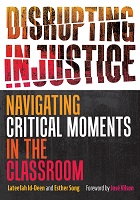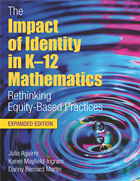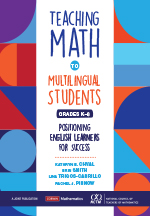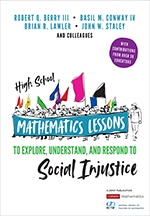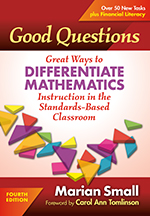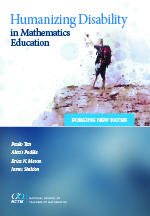Supporting Each and Every Student: Equity and Diversity
Read more on how to implement these tips:
Equity does not mean equal. Equity is not just about treating all students equally, but rather about recognizing and addressing the unique needs and strengths of each individual student. This means acknowledging that students have different learning styles, abilities, and backgrounds, and adapting our teaching practices to meet these differences. By doing so, we can create a more inclusive learning environment that values and respects the diversity of our students. This might involve providing extra support for students who need it, or offering additional challenges for students who are advanced. It might also involve incorporating diverse perspectives and experiences into our teaching materials, or using technology to reach students who may not have access to certain resources. By prioritizing equity, we can help all students feel seen, heard, and valued, and work towards creating a more just and equitable society.
Focus on the individual. Learning our students' names is only the first step in developing a relationship with those individuals. The more we understand and respect the individual's background and strengths, the more we understand their needs. How do
language, culture, gender, and socio-economics shape our students' world? More importantly, how can we, as teachers, understand, celebrate, and utilize the strengths and differences that make our classes unique? A first day handout or classroom exercise might include a survey that asks students to list strengths and asks about their cultural backgrounds, experiences with math, and preferred learning styles. A simple exercise such as this can give us a good idea of students' feelings about mathematics and about themselves as math students, providing the contextual starting point for classroom interactions.
Create a safe and inclusive learning environment. Creating a safe and inclusive learning environment is crucial for promoting equity and diversity. Start with the classroom decor, organization, and set-up. Ensure that your classroom displays positive messages and includes representations of the different cultural backgrounds of your students. Consider adding posters that suggest a "safe space" to make students feel welcome and valued.
Beyond decor, acknowledge and value the diversity of students' backgrounds, cultures, and experiences. Incorporate diverse perspectives and experiences into your teaching materials, use
culturally responsive teaching practices, and provide opportunities for students to share their own stories and experiences. By doing so, you can
create a sense of belonging and identity among your students, which is essential for their academic success and personal growth.
Address biases and cultivate an equitable classroom. As educators, it's essential to acknowledge and address our own biases, recognizing that they can impact our teaching practices and student outcomes. Take proactive steps to develop your
cultural competence and create a learning environment that values diversity and promotes equity. Incorporate a range of instructional strategies, such as manipulatives, visuals, projects, and technology, to meet the diverse needs and strengths of your students. Incorporate culturally relevant examples and historical figures into your curriculum to make math meaningful and accessible for all. By intentionally designing lessons that celebrate differences and offer multiple pathways to success, you can foster a classroom where every student feels seen, heard, and empowered to become a confident mathematician and problem-solver.
Support diverse learners and learning styles. In today's diverse classrooms, it's essential for educators to create inclusive learning environments that support the unique needs of all students. By employing strategies that embrace diversity and foster inclusion, teachers can empower students to succeed academically, socially, and emotionally. Here are three key approaches to supporting diverse learners:
-
Differentiated Instruction: Tailor your teaching methods, materials, and assessments to accommodate the diverse learning needs of all students. Consider factors such as readiness, interests, and learning preferences when designing learning experiences.
-
Personalized Learning: Empower students by offering opportunities for choice, autonomy, and individualized learning pathways. Personalize instruction to align with students' unique strengths, interests, and goals, allowing them to take ownership of their learning journey.
-
Universal Design for Learning (UDL): Implement UDL principles to ensure accessibility and equity for all students. Provide multiple means of representation, engagement, and expression to accommodate diverse learning styles, preferences, and abilities, fostering an inclusive and supportive learning environment for every student.
-
Visual Supports and Protocols: Incorporate protocols and visual agendas to support emerging bilinguals and diverse learners. Use visual aids, structured routines, and clear, consistent procedures to help all students, especially those who are learning English or have different learning needs, to understand expectations and stay engaged.
Be aware of your questioning and listening techniques. How we ask questions, who we direct them to, and our interest in student responses can have lasting impacts on our students' achievement. We must believe that we can learn from all our students' responses. We can learn about the students' thinking and often we can learn alternative ways of thinking about the mathematics itself. Is each student asked to engage in rigorous mathematical thought during a lesson? Is each student given the time to think? Students should have the opportunity to tackle rigorous math every day, and carefully examining and altering our
questioning and listening techniques can better assure that this happens.
Empower each student. Recognize that every student has unique strengths, needs, and experiences. As educators, we must strive to create an inclusive and supportive environment that acknowledges and values these differences. To achieve this, we need to develop strategies that allow us to connect with each student daily, providing opportunities for them to share their understanding, demonstrate their strengths, and celebrate their unique contributions. This might involve using
diverse assessment methods, flexible grouping strategies, and culturally responsive teaching practices. Give students opportunities for students to share their understanding in different ways. Provide opportunities for all students to demonstrate their strengths and celebrate their unique contributions to the classroom.
Embrace diversity and cultivate inclusion. It's crucial to create a classroom where every student feels valued and respected, regardless of their background. Celebrate the richness of diversity in your classroom by actively integrating the
voices, cultures, and backgrounds of all students. Recognize and honor the unique identities, languages, and experiences of
multilingual learners and students from diverse cultures. Incorporate culturally relevant examples, problems, and perspectives into your teaching materials to create an inclusive learning environment where every student feels valued and represented. Provide scaffolding and support for
multilingual learners by offering visuals, wait time for translation, and resources in their native language. Encourage collaboration and communication among students of different backgrounds, fostering mutual understanding and respect. By embracing diversity and fostering inclusion, you create a classroom where every student can thrive academically, socially, and emotionally.
Prioritize social-emotional learning (SEL). Social-emotional learning is all about helping students develop important life skills like self-awareness, managing emotions, and building positive relationships. When we prioritize
SEL in our classrooms, we create a safe and supportive environment where all students can thrive, both academically and emotionally. We can plan accordingly to ensure our warm-up activities not only include academic reflection, but also a space to measure how they feel emotionally and how this affects their performance in the classroom.
Stay updated on educational trends. As educators, it's essential to stay informed about the latest research and best practices in education, especially when it comes to promoting equity and diversity. By attending professional development workshops and keeping up with current trends, we can access valuable resources and strategies to better support our students.
Cultivate a professional learning network (PLN). Building a network of colleagues, mentors, and experts who share our commitment to equity and diversity can be incredibly valuable. Our PLN allows us to collaborate, exchange ideas, and learn from each other's experiences. Whether it's through online forums, social media platforms, or professional organizations, connecting with like-minded educators helps us grow both personally and professionally.
Maximize opportunities with technology.
Integrate technology thoughtfully in your classroom to provide
equitable access and opportunities for all students. Access to technological resources, such as calculators, computers, and 3D printers, can significantly enhance learning experiences and support success. Here are some ways to ensure technology integration promotes equity:
- Ensure Availability: Work with your school or district to ensure all students have access to necessary technology. This might involve
securing grants, fundraising, or advocating for resources to provide devices and internet access to students who need them.
- Offer Training: Provide training and support for students on how to use technology effectively. This helps level the playing field for historically marginalized students who may not have had prior exposure to these tools.
- Use Assistive Technologies: Leverage assistive technologies to support diverse learning needs. Tools like text-to-speech, speech-to-text, and specialized software can help students with disabilities or learning challenges access the curriculum more effectively.
- Promote Digital Literacy: Integrate digital literacy into your curriculum, teaching students how to navigate, evaluate, and create information using technology. This skill set is crucial for success in the modern world and can help bridge the gap for students who may lack technology experience at home.
- Encourage Creativity and Innovation: Use technology to foster creativity and innovation in your students. Encourage projects that utilize different tech tools, like coding, digital storytelling, or 3D design, to engage students and develop their skills.
Related Publications:
